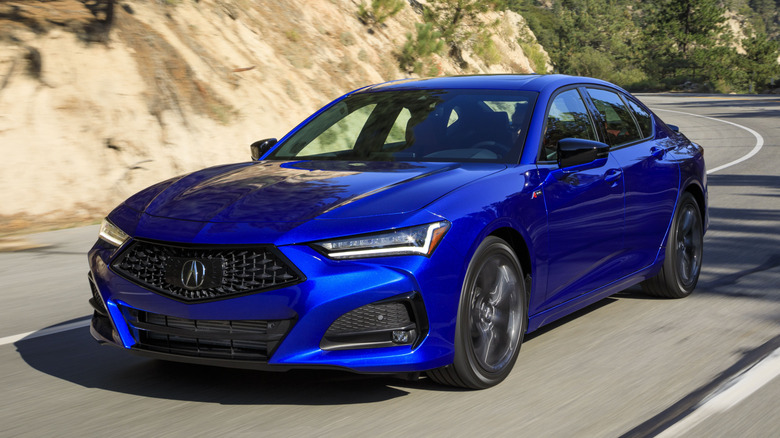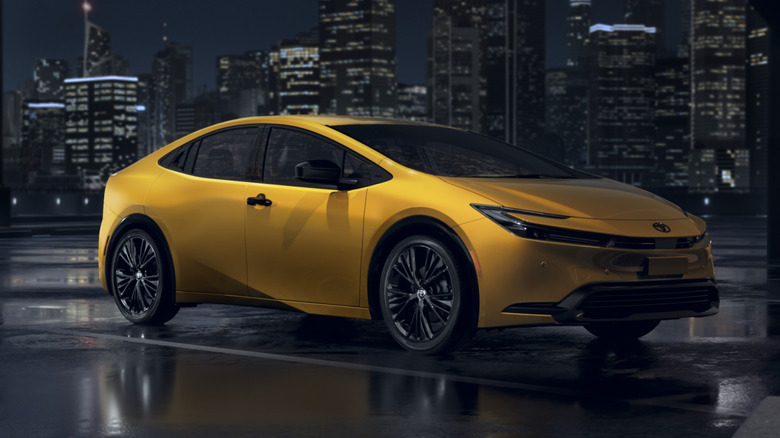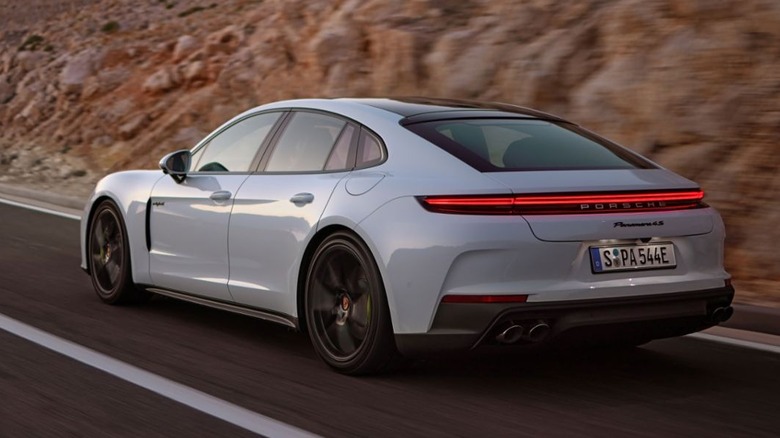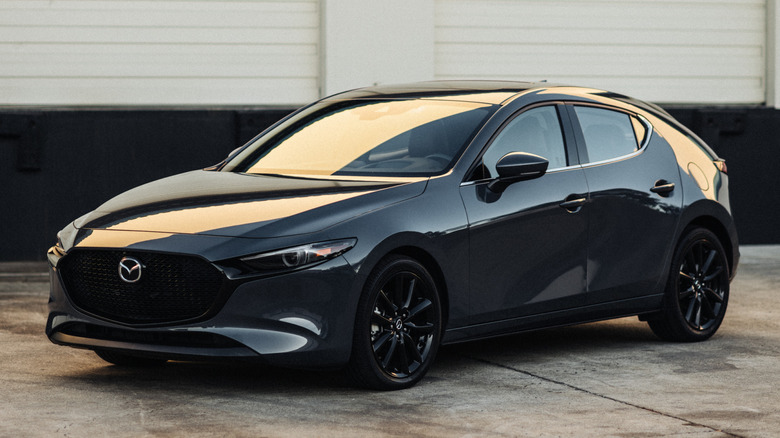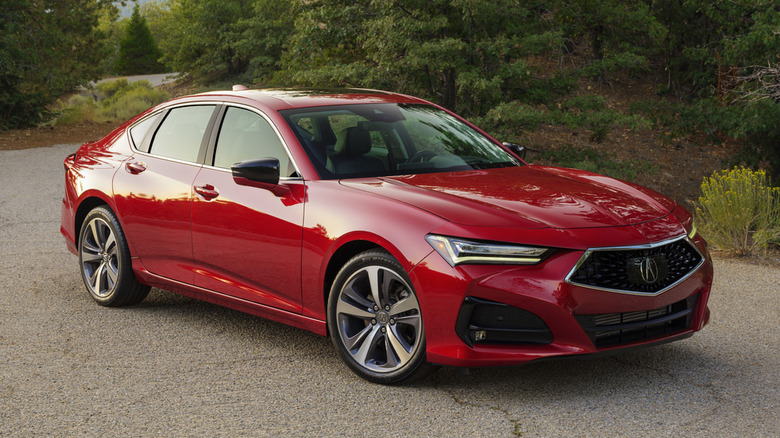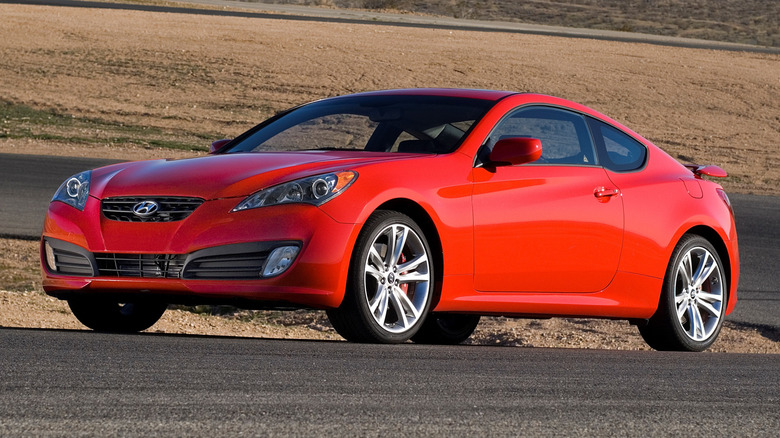5 Ugly Car Models That Received Massive Glow Ups In Later Generations
Ugliness may very well be largely a matter of personal opinion, but there have been plenty of universally panned vehicles over the years. For instance: The Pontiac Aztek, a forever whipping post of car design gone bad. It never had a chance to redeem its unfortunate ways with a restyle, as it was quickly sent to the automotive dust heap. But what if Pontiac had deemed the awkward car worthy of a glow-up?
Otherwise known as a mid-cycle refresh or perhaps an all-new generation, this common practice in the auto industry provides the ugly car contingent a second chance to shine. Like the Honda Civic Type R which went from wacky boy-racer in its last generation to sharply styled aspirational sports sedan in current form.
Sometimes, automakers have a good run of design that goes haywire along the way, but ultimately finds its way back to good looks — like the Mazda6, for example. These are the cars we're after today. The rides that, at some point, wore the ugly car brand, but later received a proper glow-up and the ability to strut with style. Here are five of them, from a completely subjective, personal, and opinionated point of view.
Toyota Prius
Toyota has been building its hybrid Prius since 2001, and until 2023, it ranged from nerd-mobile to odd duck to outright ugly car. There was the first-generation Prius with its 97-hp gas-electric powertrain and 41 mpg combined rating, which helped kick off the modern hybrid movement. Tiny 14-inch wheels lent it a gawky stance and certainly no love for its looks. The second-gen Prius from 2004 brought forward a liftback design that lent the car a distinct lozenge shape.
An evolution of this look carried forward to the third-generation Prius in 2010. Not an ugly car exactly, these Priuses fell into the oddball bucket of design, albeit one developed for efficiency, like a 50 mpg combined fuel economy rating. In 2016, the Prius design wheels came off and it was left with strange pointy headlights, an overwrought keister, and a vibe that seemed to be anything but Toyota's design inspiration of runners in starting blocks.
However, for 2023 Toyota ditched two decades of goofy design and ushered in perhaps one of the most stunning glow-ups in automotive history. I've witnessed the fifth-gen Prius cause double takes from passersby, who are frequently left in disbelief that it is in fact a Prius. Winning a World Car Design of the Year award in 2024, the current Toyota Prius offers stylish touches like 19-inch wheels, bold colors like Karashi yellow, and an athletic profile that belies its nerd-tastic roots.
Porsche Panamera
Porsche has a reputation for building world-class sports cars, but its iconic 911 hasn't always been lauded for its looks. Chalk it up to the rear-mounted engine, but for many years the 911 had a bubble butt. Some might say a hunchback and that latter denigration definitely applies to the original Panamera. This automotive engineering marvel featured full-size cabin and a 550-hp twin-turbo V8 in its Turbo S guise, but boy, that potato-like back end do it no favors.
A mild facelift in 2014, four years after the Panamera's introduction, did little to help. Much of this was improved upon in 2017 when Porsche unveiled the second-generation Panamera. Largely familiar up front, the overall envelope was wider and lower with a revised rear fascia and, crucially, a revamped tailgate light bar that improved the rear three-quarter lines dramatically. When the Sport Turismo version, Porsche-speak for station wagon, showed up, the Panamera looked downright dynamite with its long proportions stretched in all the right places.
But without a doubt, the current Porsche Panamera that launched in 2024 utterly ditches the original ugly car look with a comprehensive glow-up. The front end is more square-jawed, the headlights feature thin LED elements, and the narrow full-width rear light bar brings a slimming effect to the still-large tailgate. It also manages to make this four-door 911 feel more like its two-door sibling more than ever before.
Mazda3
Mazda's compact 3, offered in sedan and hatchback formats since day one, landed in the ugly car department for just one of its four generations. That second-gen 3's oversized smiling cartoon front face, drooping taillights, and 16-inch steel wheels with hubcaps for base models was a major design miss. The original Mazda3 had fun, sporty styling that was even better in the souped-up Mazdaspeed3 kit. All of which applies mainly to the hatchback, as the Mazda3 sedan struggled to look sharp during the first few generations with its weirdly styled trunk area.
Fortunately, Mazda applied its Kodo design language to the third-gen 3, which landed in 2014. An extra two inches between the wheels and the removal of 1.8 inches in overall length gave the 3 a more planted look. The smirking face was replaced with a more elegant pentagonal grille, the headlamps added a degree of aggression, and a sweeping bodyside line brought style. It was nice, but the 2019 Mazda3 was nicer. Kicking off fourth-gen production, the current 2025 Mazda3 swaggers with slim headlights and an evolution of the Kodo design that comes across as the definition of a glow-up.
For the first time, Mazda sharply differentiated the hatchback and sedan lines with a notably curvaceous C-pillar on the hatch. I would argue this is the first 3 to have a good-looking sedan version with its crisp rear-end that loses nothing in the design department versus the hatchback.
Acura TL
As the Acura TLX, formerly TL, gets axed from the Japanese automaker's lineup, this is the perfect time to look back at how this sports sedan evolved. The first-gen TL from 1996 replaced the Vigor with long, flat, inoffensive sheetmetal. In 1999, the second-gen TL debuted with angular lines that weren't ugly, but weren't exactly amazing either. Though the Type S variant from this TL series did dial up a bit of style with chunky five-spoke wheels and a subtle bodykit.
For the third-generation TL, Acura nailed the design brief with a perfectly angled front-end, stubby rear deck, and beefy wheels. These TLs also received a manual transmission for the first time to go with more aggressive bodywork in Type S spec. Really, it is just the 2009 Acura TL, which marked the start of the fourth generation, that landed this long-running ride in ugly land. Mostly due to the big, chromed beak mounted front and center. The ovoid profile didn't help much, but truly that schnozz took the TL in the wrong design direction.
In 2015, Acura renamed the TL to the TLX and, in the process, deleted the TSX from its lineup. The first TLX iteration was perfectly fine from a design perspective, if a bit staid. Thankfully, the 2021 TLX changed that with classic sports sedan proportions and a muscular stance. Stretching the axle-to-dash dimension by almost eight inches and adding 3.7 inches between the wheels, the latest and final model of TLX looks sharp.
Hyundai Tiburon
Technically, the Hyundai Tiburon and Genesis Coupe are unrelated automobiles. However, the Genesis Coupe could be considered a spiritual successor to the Tiburon as a sporty two-door, even though it was RWD versus the FWD Tiburon and didn't follow the traditional linear progression of vehicle generations. Nonetheless, the original 1997 Hyundai Tiburon was strange to lay eyes upon, with lots of body creases and an awkward C-pillar layout.
Then, thanks to a facelift in 2000 that brought six individual light pods to the nose, it fell hard into ugly car territory. Tiburon is Spanish for shark, but these original models seem closer to a word that rhymes with bird as far as design goes. Hyundai did a nice job on the glow-up front with second-gen Tiburons that dropped the overly complex and creased bodywork for a cleaner and sportier look. Interestingly, these Tiburons were designed in-house at Hyundai as opposed to the first-gen models that were outsourced to Italian design firm Giugiaro.
It is, however, the Hyundai Genesis Coupe that completed the transformation from ugly duckling Tiburon to snappily attired Infiniti G37 competitor. Part of Hyundai's early move toward a Genesis sub-brand, the 2010 Coupe had an arching roofline and tapering greenhouse complemented by "Z" bodyside lines and up to 19-inch wheels that filled out the wells quite nicely. Broad rear quarter panels upped the athletic look and a kink in the rear quarter windows made it one of the best looking Hyundais ever designed.
